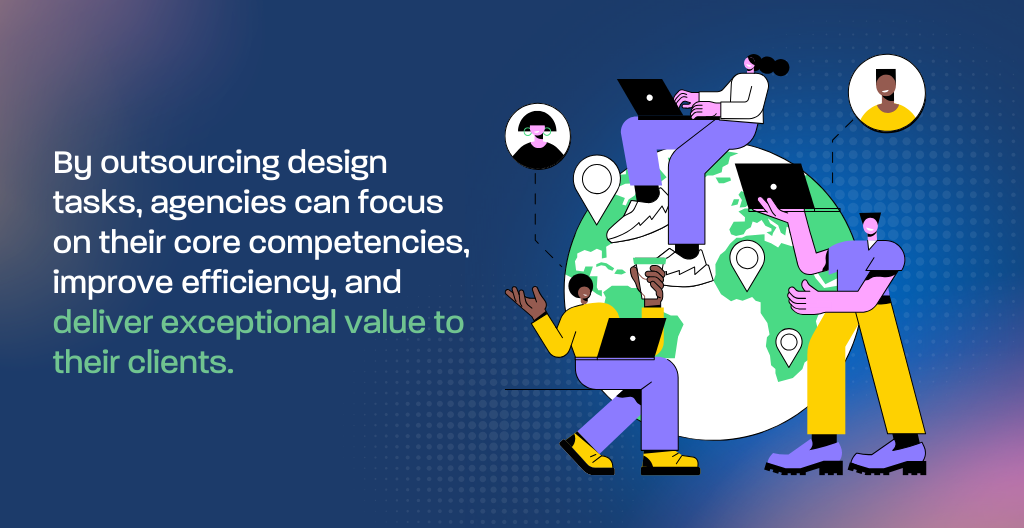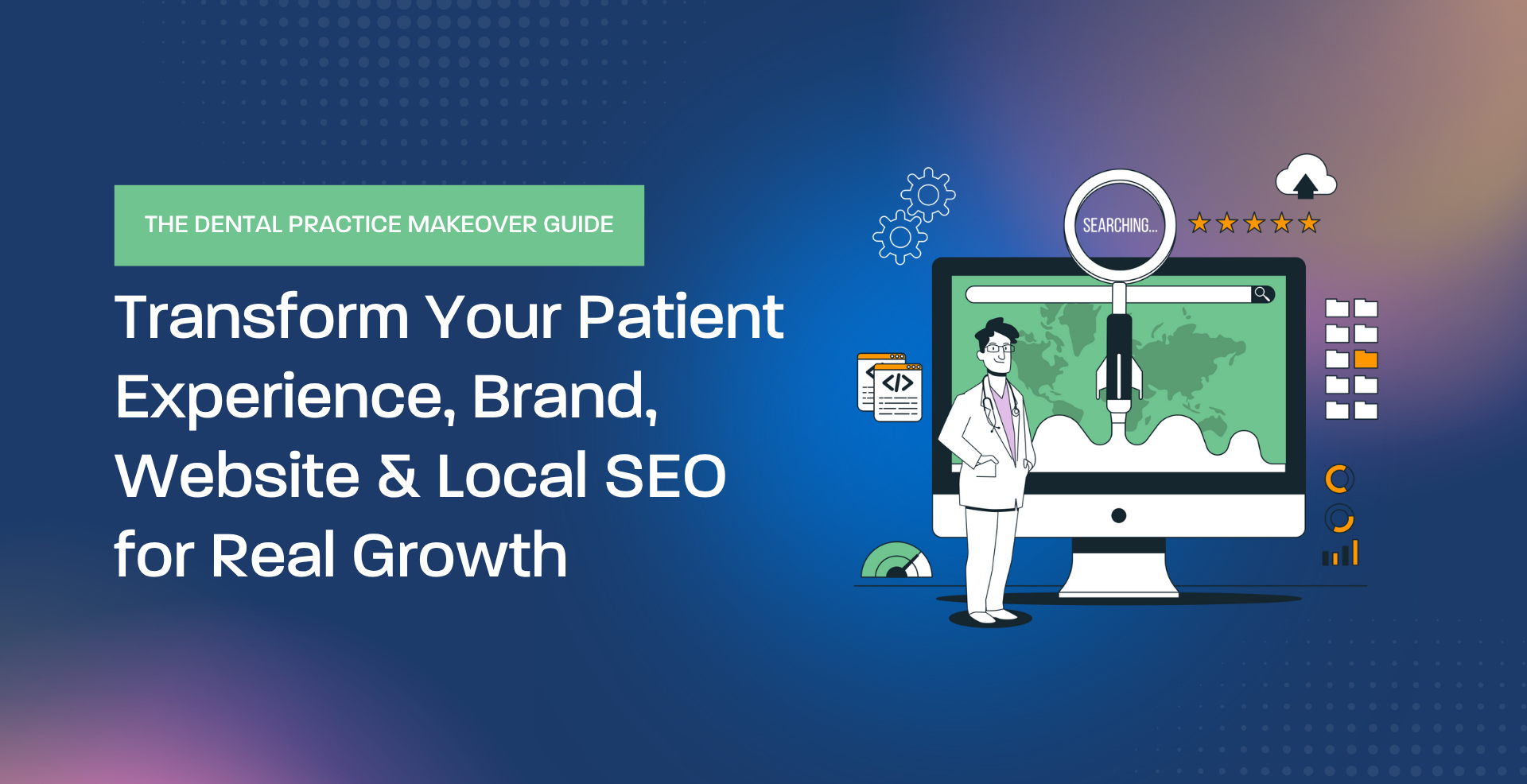In New York City, two marketing agencies were vying for the same clients. The first agency had a talented team of in-house designers but struggled to keep up with the ever-increasing demand for creative assets. The second agency, on the other hand, had partnered with a white-label graphic design agency, allowing them to offer a wider range of services without the need for significant internal investment.
Agency B quickly outpaced Agency A, delivering faster turnaround times and a broader range of design services. Their clients were impressed by the quality of work and the efficiency of their partnership. Agency A, realizing its mistake, eventually followed suit, partnering with a white-label graphic design agency of its own.
This story highlights the importance of finding the right white-label graphic design partner. By outsourcing design tasks, agencies can focus on their core competencies, improve efficiency, and deliver exceptional value to their clients.
Geeks For Growth has a free guide titled – A Guide to Successful white-label Partnerships which focuses on why agencies are increasingly turning to partners for design services, valuable insights into how these partnerships can be developed, and all you need to know before making the key decision to enter a white-label partnership with a partner like Geeks For Growth.
Finding the Perfect White-Label Graphic Design Partner
Partnering with a reliable white-label graphic design agency can be a strategic move for businesses looking to expand their service offerings without investing heavily in in-house resources. However, selecting the right partner is crucial to ensure a successful collaboration. This article will guide you through the key factors to consider when choosing a white-label graphic design partner like Geeks For Growth.
Expertise and Portfolio
- Specialized Skills: Look for a partner with expertise in the specific design areas that align with your business needs. This could include logo design, branding, website design, social media graphics, or packaging design.
- Industry Experience: A partner with experience in your industry can provide valuable insights and tailor their designs to your target audience.
- Portfolio Review: Carefully examine the partner’s portfolio to assess the quality of their work and ensure it aligns with your brand aesthetic and style. Pay attention to the variety of projects, attention to detail, and overall design consistency.
- Case Studies: Ask for case studies or testimonials from previous clients to get a better understanding of the partner’s capabilities and the results they have achieved.
Reliability and Communication
- Timeliness: A reliable partner will consistently meet deadlines and deliver projects on time.
- Communication: Effective communication is essential for a successful partnership. Look for a partner who is responsive, proactive, and transparent in their communication.
- Project Management: A well-organized partner will have a clear project management process in place to ensure that projects are delivered on time and within budget.
- Client Support: A reputable partner will offer excellent client support, including regular updates, addressing concerns promptly, and guiding the project.
Design Process and Collaboration
- Creative Process: Understand the partner’s design process to ensure that it aligns with your expectations and workflow.
- Collaboration: A good partner will be open to collaboration and willing to incorporate your feedback and ideas into the design process.
- Flexibility: The ability to adapt to changes and accommodate last-minute requests is a valuable quality in a white-label partner.
- Iterative Design: A partner who embraces an iterative design process will be able to refine designs based on feedback and ensure the final product meets your expectations.
Quality and Consistency
- Design Standards: Ensure that the partner can maintain consistent quality and adhere to your brand guidelines.
- Attention to Detail: Pay attention to the level of detail and craftsmanship in the partner’s work.
- Revisions and Feedback: A good partner should be open to revisions and feedback, making necessary adjustments to ensure client satisfaction.
- Quality Assurance: Ask about the partner’s quality assurance processes, such as design reviews and testing, to ensure that the final product meets the highest standards.

Transparency and Trust
- Contractual Agreements: Have a clear and comprehensive contract in place that outlines the terms of the partnership, including deliverables, timelines, and payment terms.
- Confidentiality: Ensure that the partner has strict confidentiality measures in place to protect your intellectual property.
- Alignment of Values: Look for a partner whose values and creative vision align with your own. This will foster a more harmonious and productive collaboration.
- Trustworthiness: A reputable partner will build trust through honesty, transparency, and reliability.
Additional Considerations
- Pricing and Payment Terms: Understand the partner’s pricing structure and payment terms to ensure they are fair and reasonable.
- Scalability: Consider the partner’s ability to scale their services to meet your growing business needs.
- References: Ask for references from previous clients to get a better understanding of the partner’s reputation and capabilities.
- Technology: Inquire about the partner’s use of technology and tools to streamline the design process and improve efficiency.
Two red flags to look for when choosing a white-label design partner
- Lack of clear communication: One of the biggest red flags when evaluating a white-label design partner is poor communication. If a potential partner is slow to respond, unclear in their messaging, or fails to ask insightful questions about your project, this could be an early sign of trouble. Effective communication is critical for a successful partnership, and any communication gaps can lead to delays, misunderstandings, and subpar results. A reliable partner should be proactive, keep you updated throughout the project, and respond to your concerns or feedback promptly.
- Inconsistent quality in their portfolio: Another red flag is inconsistency in the design partner’s portfolio. Inconsistent quality, attention to detail, or creativity in past work may indicate difficulty maintaining high standards consistently.. This inconsistency can lead to headaches down the line, as you might receive designs that don’t align with your expectations. Make sure their portfolio matches the quality you expect for your projects, and be cautious of inconsistencies.
Conclusion
By carefully considering these factors, you can find a white-label graphic design partner that will help you elevate your brand, improve your marketing efforts, and achieve your business goals.
At Geeks For Growth, we believe in the power of white-label partnerships. Our free guide, “A Guide to Successful White-Label Partnerships,” provides valuable insights into building effective collaborations. This resource explains why agencies are turning to white-label design partners and what to know before partnering.
To learn more about the benefits and long-term impact of white-label partnerships, the key factors in forming and sustaining partnerships, and how to strike the right balance between design, creativity, and client requirements, you can get GeeksForgrowth’s whitepaper for free!
Need a white-label partner to handle everything while delivering top-quality services under your brand name? Geeks For Growth is your efficient white-label partner that will help your agency shine with premium branding and design services.






